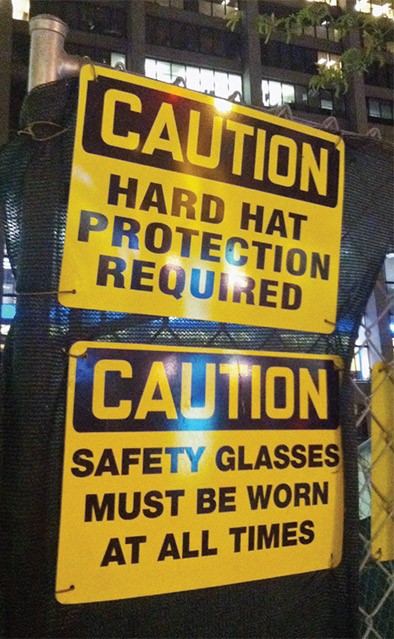Struck by Objects
Employers have a duty to provide a safe work environment for employees. That includes compliance with OSHA rules, providing safety training and making safety a top priority – from the CEO to the newest hire. But there are things employees can do, as well, to stay safer at work.
There are many things vying for our attention every day, and a lack of focus on the task at hand can lead to tragedy, especially in riskier situations.
One of the leading causes of work-related deaths is contact with objects. This could include:
• Struck against an object
• Struck by an object
• Caught in an object or equipment
• Caught in collapsing material
Objects that fall, roll, fly, slide, slip and swing can do serious damage to a person. Construction workers hit by building materials, vehicles slipping off of jacks, loggers struck by trees – all have a high fatality rate, but all are preventable.
About 75% of struck-by fatalities involve heavy equipment, such as trucks or cranes, according to OSHA. Workers in agriculture, construction and manufacturing are most at risk, but firefighters, police, transportation employees, office workers and others also can count contact with objects in the top three causes of death and injury.
According to Injury Facts®, there have been about 700 workplace deaths due to these types of incidents every year for the past decade, and hundreds of thousands of injuries annually that involve days away from work. Check out the data details here.
These Injuries can be Prevented
Inattention to surroundings and being distracted can lead to injury, as does faulty equipment, lack of proper training, improper behavior by workers, or lack of workplace assessments and housekeeping.
Paying attention is vitally important for those operating machinery, as well as those working around it. NSC offers some additional tips employers and employees can use to help prevent injury from contact with objects:
• Check vehicles before use to make sure they are in safe operating condition
• Securely and neatly store loose materials
• Secure items that are stored at a height
• Store heavy objects close to the floor
• Open one filing cabinet drawer at a time to prevent a tip-over
• Wear the proper personal protective equipment for your environment, such as steel-toed shoes and a hard hat
• Always walk behind moving equipment if possible
• Never obstruct your vision by overloading moving equipment
• Only operate equipment you are properly trained to use
• Make sure all safety devices on your equipment are in good working order before use
• Use extra caution around corners and near doorways
• When large equipment is being operated, always make eye contact with the operator before approaching
• Secure all loads and lift them evenly to prevent them from slipping
When employees are proactive and employers provide proper education on job-specific hazards, conduct safety assessments, address gaps and provide corrective action, the risk of being struck by an object at work is dramatically reduced.
Thanks to the NSC!



